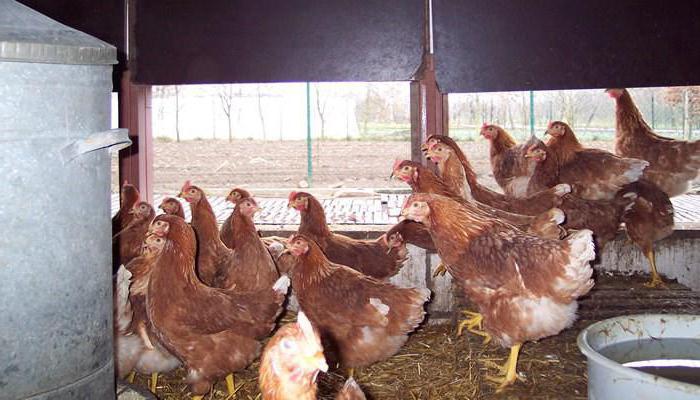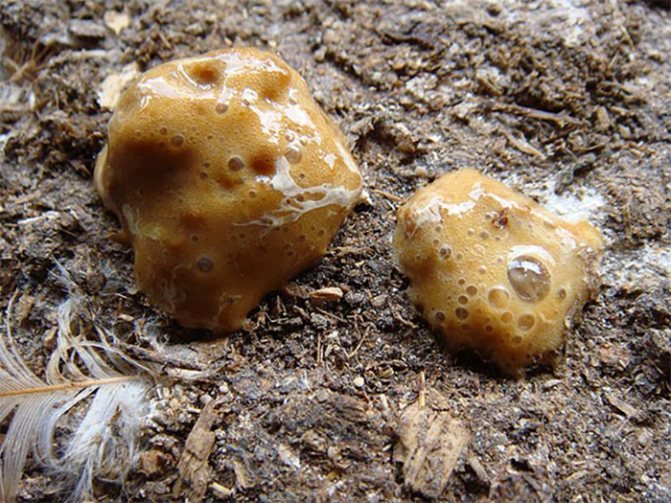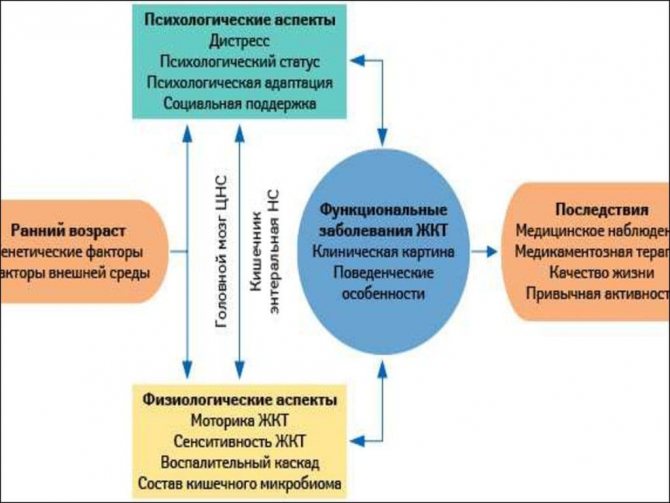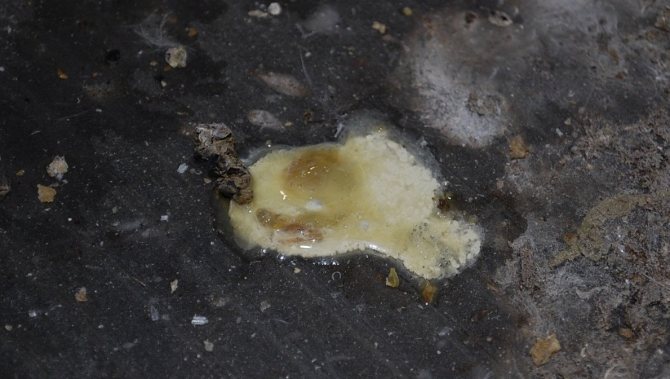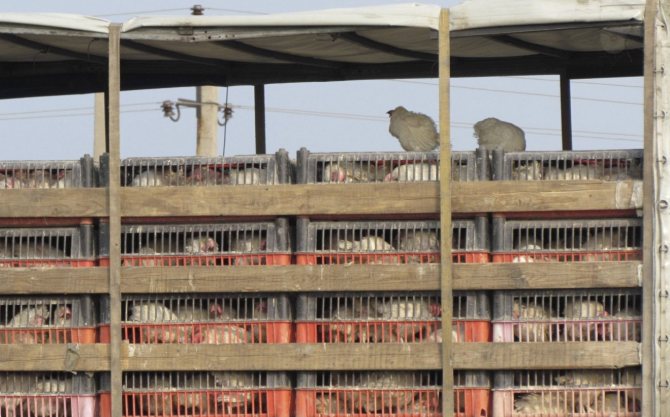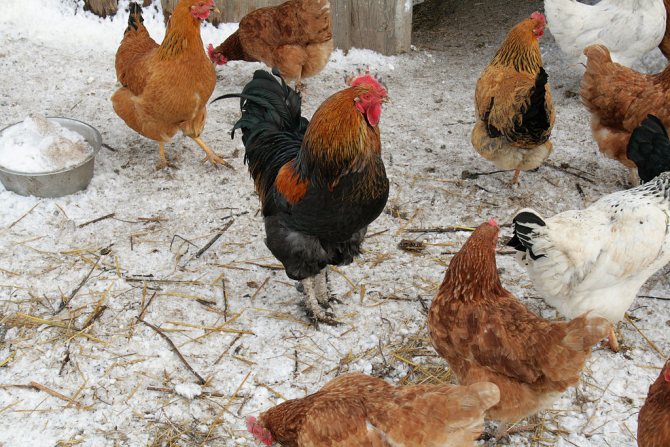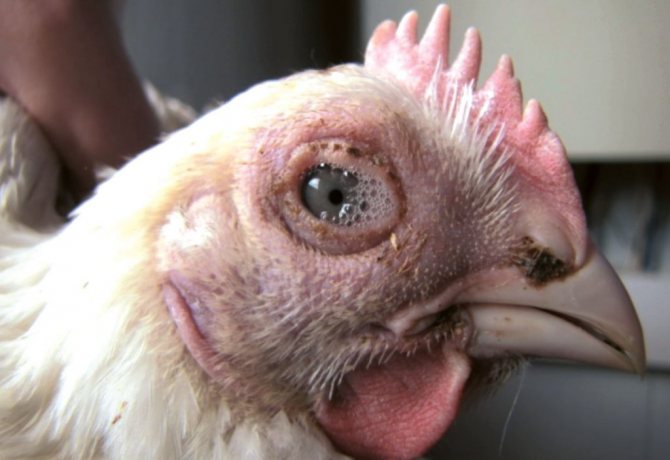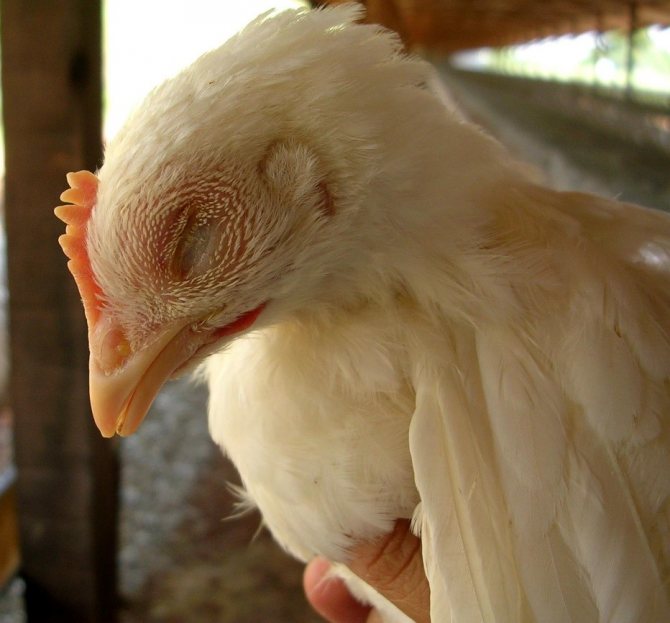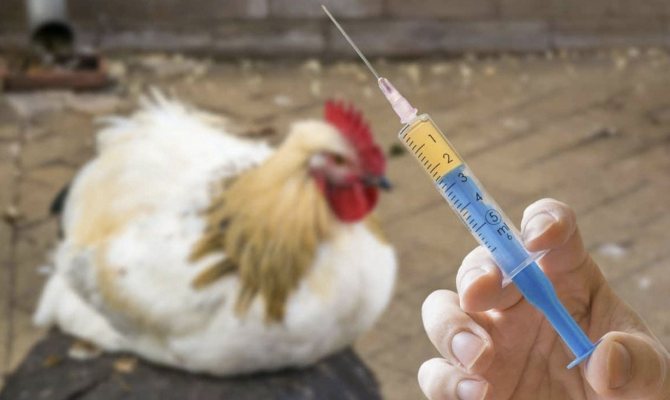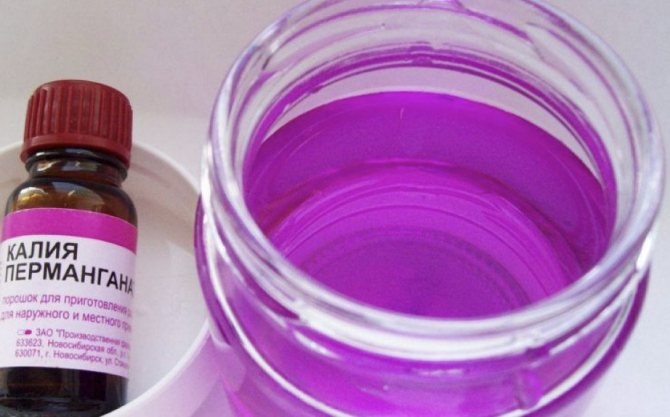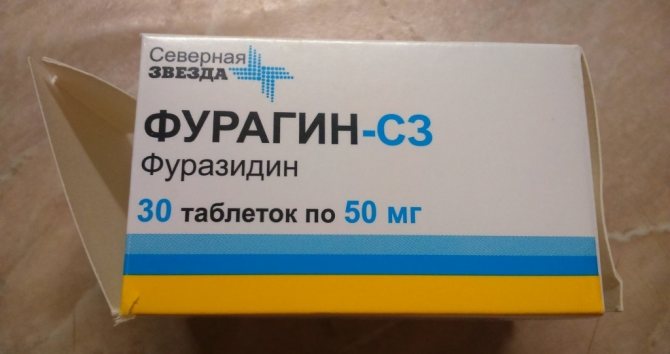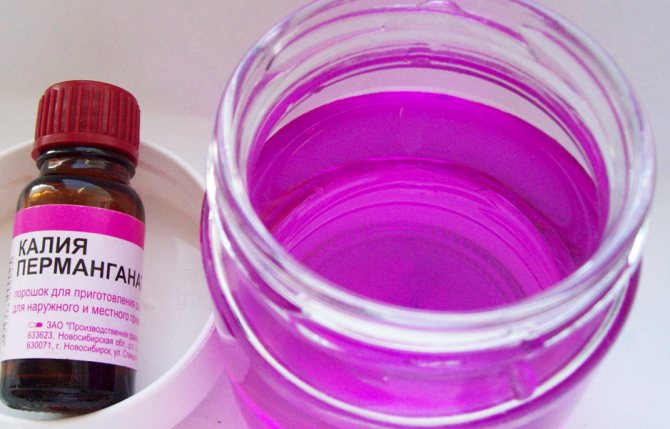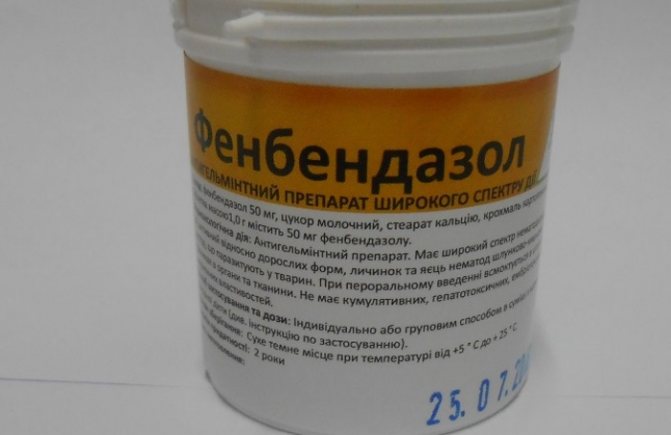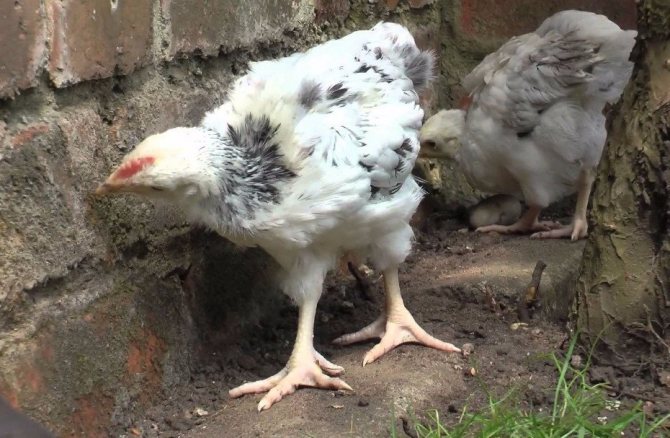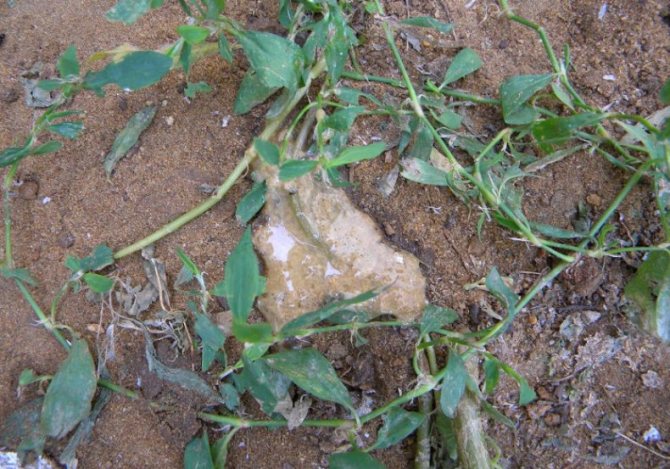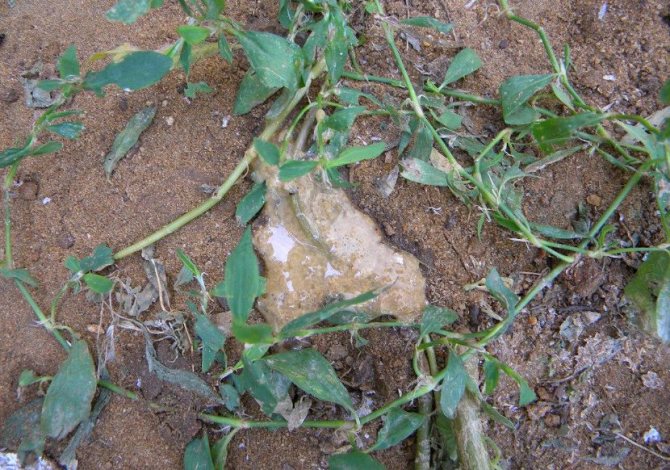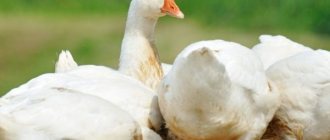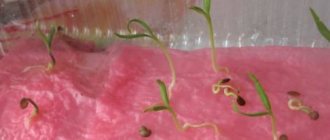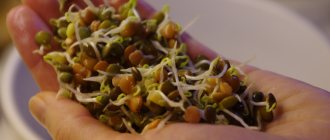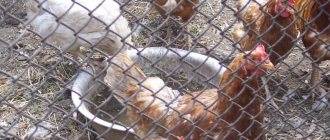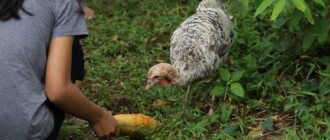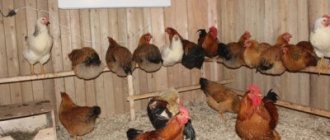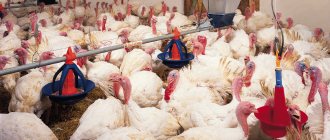Causes of diarrhea
What to do if chickens, adult poultry are fed? How to treat them? Such questions are of interest to all novice farmers without exception. Diarrhea in poultry, which is characterized by frequent watery stools, can occur against a background of a variety of adverse factors. At the same time, before taking appropriate measures, it is necessary to establish the root cause, to find out why the bird began to vilify strongly.
If the chicken has severe profuse diarrhea, black, green, white loose stools, blood is noticeable in the droppings, a large amount of mucus, foam, a veterinarian should prescribe adequate therapeutic therapy, taking into account the cause of this condition.
Causes of diarrhea in laying hens:
- unbalanced diet;
- feeding with low-quality, low-grade feed;
- poisoning with chemicals, pesticides, poisons;
- frequent severe stressful situations;
- poor living conditions, lack of hygiene in poultry houses;
- metabolic disorder;
- a sharp change in diet;
- hypothermia;
- colds;
- infectious, bacterial infections;
- helminthic invasions.
Diarrhea in chickens and laying hens can be triggered by prolonged use of pharmacological drugs, drugs, in particular antibiotics. Upset stomach is very often caused by seeds of poisonous plants (spurge, buttercup, dope) in birds, provoking severe poisoning, intoxication.
Unfortunately, not all owners, when equipping chicken coops, pay attention to the quality characteristics of the materials used, which can also cause diarrhea in poultry. So, if the dishes contain a large amount of zinc, copper - such chemical elements can cause severe diarrhea in chickens, adult chickens.
If the chickens have fed, the color and consistency of the feces will help determine the condition of the bird. Noticing that a rooster, chickens, layers against the background of diarrhea developed other side symptoms, for example, chickens fall, weaken, coordination of movements is impaired, the bird looks emaciated, refuses feed in order to prevent the death of the entire chicken herd, it is recommended to contact as soon as possible with a veterinarian.
Causes of diarrhea (diarrhea) in chickens
Some of the most common causes of litter change and diarrhea in chickens are:
- Eating poor quality feed, arises in the case of purchasing feed with an expired shelf life or impaired storage technology. As a result, pathogenic and fungal microorganisms develop in it, which are difficult to diagnose by visual inspection, but cause an immediate reaction when they enter the animal's body.

Important! External manifestations in this case may be the appearance of vomiting, seizures and general weakness in chickens associated with intoxication of the body.
- Changing your diet chickens can also cause diarrhea, due to the disturbance of the digestive process associated with a sudden change in the type of feed. Outwardly, the effect of this factor is manifested in the presence of undigested food residues on the surface of feces.
- Poisoning by ingestion of large quantities of food heavy metals, arises as a result of storing feed in containers made of zinc and copper that are not intended for these purposes.
Note! Among the not very common causes of pathology, experts call spring vitamin deficiency; to eliminate the deviation, it is enough to introduce complexes based on vitamins and minerals into the diet of chickens.
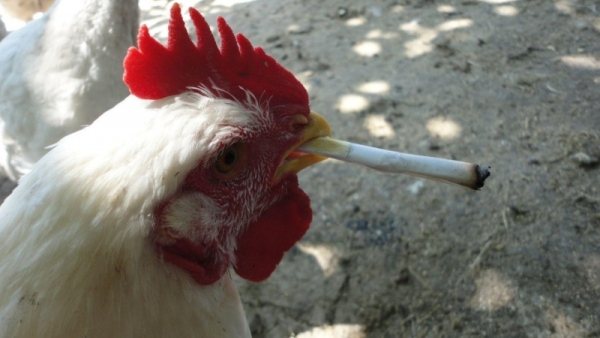

- Stool pathology in poultry can cause respiratory system disorder associated with poisoning when spraying some aerosols or long inhaling air filled with tobacco smoke.
- Disorders diagnosed in litter also occur when improper organization of drinkers, untimely sanitary measures, which leads to stagnation of fluid and the creation of favorable conditions for the development of pathogenic microflora.
Note! Some of the pathologies are a consequence of the stress experienced by birds, associated with a visit to the chicken coop by a stranger, collisions with pets, transportation or violent skirmishes with feathered relatives. To normalize the consistency and color of feces, in this case, it is enough to provide the chickens with silence and calm conditions of detention.
- An important factor provoking loosening of the stool is cold, arising in conditions of low temperatures and high humidity. To exclude this event, it is necessary to take timely care of creating an optimal microclimate in the place where the birds are kept.
- Another cause of diarrhea is consumption by chickens. poisonous plant seeds, occurs when eating food containing buttercup seeds, dope or milkweed.
In general, according to the testimony of farmers, diarrhea is a fairly common occurrence in chickens, however, timely adoption of the necessary measures ensures its rapid elimination. In the absence of intervention, depending on the state of the laying hen's immune system, the pathology can continue for several days.
Video: how to treat chickens for diarrhea
Symptoms of diarrhea in poultry
In addition to frequent bowel movements, liquid droppings, which may contain bloody clots, threads, blotches, residues of undigested food, in birds against the background of diarrhea, various side symptoms are noted:
- soiled feathers in the area of the cloaca with feces;
- decrease, lack of appetite;
- the presence of a large amount of liquid manure in poultry houses;
- lethargy, drowsiness, depression;
- adult birds, young animals quickly lose weight;
- increased thirst;
- problems in the digestive tract;
- mucus is present in the droppings.
With severe diarrhea in laying hens, sticky black droppings with blood impurities can be seen on the surface of the eggshell. In a sick bird, the coordination of movements is disturbed, it becomes fearful, inactive, the condition of the feather cover worsens, and egg production decreases.
Stool can be white, yellow, dark brown, green, black, whitish. At the same time, if other symptoms are noticeable - the chicken drinks a lot, looks lethargic, depressed, refuses food and has carried it due to infections - it is necessary to isolate the bird, since an infected individual can infect healthy ones.
Important! In small chickens, severe diarrhea can lead to exhaustion, intoxication, provoke cloacal blockage, death.
As a rule, viral and bacterial diseases are spread by contact, aerogenic way. Although diarrhea in chickens is quite common, in order to prevent the spread of infection, we recommend that you watch the sick chicken. An attentive poultry farmer will give the bird medicine and take appropriate action.
Green diarrhea
Green diarrhea in layers and chickens most often occurs due to the presence of a large amount of plant foods in the diet. Green diarrhea can also occur as a result of severe fright, the use of poor-quality feed, and poisoning with the seeds of poisonous plants. If the chicken's stool turns a light green hue, it may signal that the chicken has a cold.
Important! Green droppings, stringy foamy diarrhea with a lot of mucus, bloody blotches are most often noted with pasteurellosis. With this infection, chickens die en masse.
If, in addition to green diarrhea, the chicken drinks a lot of water, is sluggish, refuses to feed, it is possible that the bird is infected. In this case, it needs to be removed from the rest of the healthy individuals, to consult with a veterinarian regarding therapeutic therapy.
White diarrhea
Diarrhea of white color most often indicates a lack of any vitamins, minerals in the body of the bird. If the feces resemble chalk, have a solid consistency, the chicken must be urgently isolated, since such diarrhea is one of the symptoms of viral, bacterial diseases that provoke paratyphoid bacteria.
Important! Paratyphoid fever of chickens is an acute, highly contagious disease that is very quickly transmitted by airborne transmission. Most often, the disease is diagnosed in chickens aged 10-14 days.
White diarrhea is noted with salmonellosis, intestinal parasites, and disturbances in the functioning of the digestive tract.
Yellow, brown, brown diarrhea
Diarrhea of a yellow, mustard color, as a rule, in layers, chickens develops against the background of viral, bacterial infections. Yellow-white droppings are a symptom of Gumboro disease. If the chicken does not eat, constantly drinks water, it may be sick with a respiratory ailment.
Short-term yellow diarrhea in birds can occur with a sharp change in diet, diet, stress, feeding low-quality grain mixtures.
Brown, black diarrhea indicates functional disorders in the digestive tract. Bloody diarrhea is a sign of an infectious disease.
Bloody diarrhea is most common in chickens under 1–2 months of age. The pathogenic flora actively multiplies in the intestines of young individuals, provoking disturbances in the functioning of the digestive system. In addition, diarrhea with blood indicates a possible infection of the bird with coccidosis, trauma to the cloaca.
Diarrhea caused by infections
Diarrhea often leads to discoloration of the droppings, and this is already dangerous. Stool color varies and is most commonly caused by infection.
White diarrhea
This color of stool most often appears in pullorosis caused by salmonella. In poultry, not only the intestines are affected, but also the ovaries. White diarrhea seen in chickens can affect all organs, which leads to death. Chickens are infected from sick individuals through droppings and infected eggs.
Sick chickens can also be identified by external signs:
- the beak is constantly open, breathing is heavy;
- the hens are lethargic, almost do not move, they sit crumpled;
- digestion is impaired;
- the hens stop laying eggs.
Chicks suffering from white diarrhea do not grow well, and for the most part stand with their feet wide apart. At the same time, the eyes are tightly closed. It is almost impossible to cure chickens from pullorosis, so they are slaughtered.
Yellow diarrhea
If the birds are kept in unfavorable conditions, or the cause is stress, then they may develop yellow diarrhea. In this case, it is enough to drink the chickens with potassium permanganate and put the room in order.
But if the cause of the yellow diarrhea is an infection, and this is, as a rule, Gumboro disease, then you will have to conduct a study of feces or a dead bird. The veterinarian will prescribe the appropriate treatment.
Greens in the droppings
If the contents of the litter are green, then research should be done, perhaps the diarrhea is caused by paterella. If the tests are good, then the reason is non-infectious. Treatment will be prescribed by a doctor with special drugs.
The green color of feces often appears in the first spring months, when the birds are transferred to pasture.Overeating fresh grass can cause green diarrhea. In this case, medications are not required; folk remedies can be dispensed with. For example, to drink sick chickens with a solution of potassium permanganate, an infusion of chamomile or other herbs that have a tanning effect.


Important! Green diarrhea can occur when feeding poor-quality feed to chickens. We'll have to add activated carbon to the water and replace the feed.
Brown diarrhea
Liquid stool of this color is associated only with infection. Most often, chickens get sick in autumn and spring. The cause of infection is litter, food, water.
When a bird develops brown diarrhea, the following symptoms appear:
- chickens are disheveled;
- they become indifferent to food;
- mucus can be seen in liquid stool;
- birds lose activity, most often they sit in a corner, spreading their wings and closing their eyes;
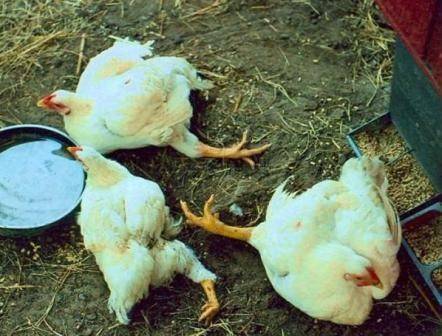

Typically, brown diarrhea is caused by eimeriosis or coccidiosis. Veterinarians prescribe coccidostatics for the treatment of chickens. Since these diseases are serious, for their prevention, such drugs can be drunk on the rest of the birds in order to prevent the disease of the herd.
Stool with blood
The cause of the appearance of blood in the liquid feces of chickens is coccidiosis. It is caused by the smallest microorganisms coccidia. They affect the digestive system of poultry. Bloody diarrhea most often affects young chicks up to two months of age.
Sick birds for the most part sit, do not approach the feeder. One of the symptoms is the blanching of the scallops. First, blood appears in the stool, and later it turns brown.
Attention! But sometimes blood can appear in the droppings due to an injury to the intestine or cloaca.
Common infections
| Disease | Feces color | Cause |
| Newcastle disease | Mucus is visible in brown droppings. | |
| Colibacillosis | The stool is yellow, and blood is often visible. | The liver is affected. |
| Coccidiosis | The feces are brown or chocolate. | Invasion of intestinal parasites. |
| Pasteurellosis | The stool is green with mucus. | |
| Clostridiosis | In black diarrhea, gas bubbles are visible, a fetid odor is noted. |
How and with what to treat?
Treatment of diarrhea in chickens and adults can be carried out with medication, folk methods. If you notice diarrhea in layers, see your veterinarian for advice on how to treat a sick bird at home. The optimal treatment regimen is selected individually and depends on the underlying cause. You should not treat diarrhea in chickens on your own, using various pills, medications. The specialist will select an effective treatment aimed at normalizing the general condition of the bird. Otherwise, uncontrolled treatment will only aggravate the situation and may provoke serious complications.
If diarrhea is caused by poor quality feeding, adjustments should be made to bird nutrition. With green diarrhea, if the chicken walks on the grass, it is worth not letting it out for a while, removing green food from the diet. If an upset stomach is triggered by hypothermia, it is necessary to provide heating by placing the bird in a separate cage.
If the chicken diarrhea, constantly drinks water, but refuses to feed - these are clear signs of gastritis. In this case, you can give the chickens, hens, the yolk of a hard-boiled egg, stirring it with hemp seeds. To normalize the condition, give the bird activated charcoal, a little wood ash, any other sorbent, enzyme agents.
Disease prevention
Is as follows:
- it is worth keeping the bird clean, regularly changing the litter;
- monitor the quality of feed, change the water every day;
- when buying new chickens, keep them separately for 2 weeks, during this time infections, if any, will appear;
- regularly carry out antiparasitic treatments, give the hens vitamins;
- eliminate the likelihood of rodents getting into the chicken coop, avoid contact between poultry and wild birds.
Diarrhea for chickens is dangerous due to dehydration, the bird weakens, loses interest in food. This is regarded as a reason for her isolation. To find out the reason for the change in the state of the layers, they are evicted, shown to the doctor, and treated. This allows the poultry farmer to save the chicken coop and avoid mass deaths of the livestock.
Drug treatment
What can you give a bird for diarrhea? If the chickens began to vilify, most often poultry farmers resort to medication. Treatment of diarrhea in chickens should be comprehensive.
Of the medicines, Biseptol, Levomycetin will help to cure indigestion. An adult hen is given 1/8 of a Biseptol tablet three times a day for 5-6 days. The dose for a small chicken is halved! For chickens, it is preferable to use baby Biseptol, which can be purchased at pharmacies.
Levomycetin is used in the following doses: dilute five tablets in 500 ml of boiled water, add to the drinking bowl. Give the bird the medicinal formulation five times a day. Levomycetin is given to chickens in a lower dosage with drinking water, feed. The drug very quickly eliminates diarrhea in poultry, so it can be called the most effective in treating diarrhea in chickens, chickens, ducks, turkeys, geese.
Drinking the bird with Levomycetin diluted in water, you must strictly adhere to the dosage. It is best to dissolve tablets in warm water, after crushing the medicine into powder. Levomycetin for chicken is given in a lower dosage 2-3 times a day for 2-3 days.
For the treatment of diarrhea in chickens, you can also use: chloramphenicol preparations, Doxycycline, Tetracycline, Sulfadimezin, Furazolidone, phthalazole, etazole, complex aqueous solutions Dolink, Trisulfan, Aquaprim. Before use, carefully read the annotation to the medication.
In addition to the above medicines, if chickens have diarrhea, probiotics (Colibacterin, Lactobacterin, Acylact, Monosporin), other enzyme products that can be purchased at the zoo pharmacy can be given. To normalize digestive processes, experts recommend giving chickens Vetox, Brovaf, Emprobio, Flosan.
Treatment features
To rid chickens of diarrhea, treatment must be started immediately, otherwise the disease can lead to dehydration and death of the bird. At the initial stage of treatment, the cause is established, that is, they find out why the chickens have fed. If the diarrhea is not caused by infections, you can use folk remedies.
Funds from the people
Since poultry has been breeding for a long time, our ancestors invented means to relieve chickens from diarrhea.
So, how to treat:
- As soon as liquid stools, including black ones, were noticed, clay is added to the drinking bowl to the water.
- Boil rice or oats and drink the thick liquid instead of water. Chickens are also given thin oatmeal.
- If there are pomegranate crusts, you can boil them and use them as an astringent, antibacterial agent.
- With green and dark brown diarrhea, it is useful to drink chamomile broth for poultry.
Remedy for diarrhea from the chickens themselves:
A warning! These folk remedies are only effective if the diarrhea is not caused by an infection.
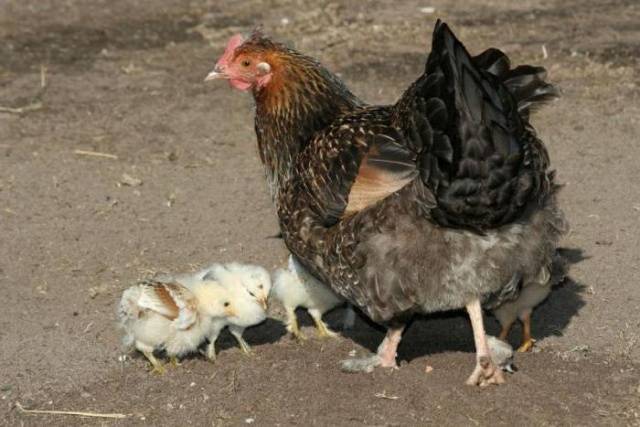

Drug treatment
Most often, antibacterial drugs are prescribed to treat diarrhea of various colors caused by infections:
- Biseptol;
- Enrofloxacin and Norfloxacin;
- Tetracycline and Biomycin.
Important! 10 mg of any of the above means is enough for one adult bird.
If liquid Levomycetin is used as a medicine, then 4 ml of the drug is dissolved in a liter of boiled water.
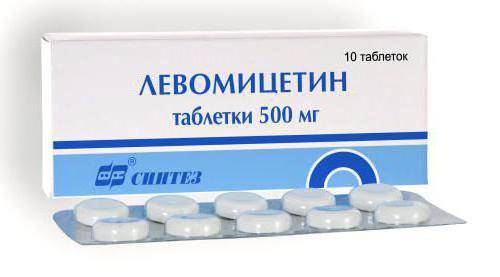

In addition to the medicine, during treatment, chickens should be given vitamin complexes, for example: Trisulfone, Dolink, Gidrotriprim and others. The tablets are dissolved in water and the solution is poured into a drinking bowl. In order to consolidate the results, you cannot do without prebiotics: yogurt, serum, Monosporin, Bifidumbacterin.
Prevention of diarrhea
In addition to a balanced diet, high-quality grain compositions, compound feed, hygiene in poultry houses, timely prevention will help prevent diseases of chickens and chickens. Add Terramycin, Furazolidone, Furagin to the bird's diet. These drugs are given according to the scheme: they are mixed into food for two weeks, then the interval is maintained for three days, and again for two weeks of taking the medicine.
To enhance the body's resistance, activate the immune forces, experts recommend the complex veterinary drug Catosal, which can be mixed into drinking water, feed or injected IM, p / w. To normalize the digestive processes, the bird should be given chalk, gravel, fresh, boiled vegetables, herbs, vitamin premixes, and mash.
When breeding chickens, their owners often face various avian diseases. Since it is impossible to track everything that birds eat, especially when free-range, one of the most common diseases is diarrhea in laying hens. We offer information on how to treat it.
Prevention measures
The basis for the prevention of any disease in poultry is compliance with the norms of its maintenance. Compliance with hygienic requirements in the room and a balanced diet are the key to the health of chickens.
Infection of chickens with various infections and the development of diarrhea against this background occurs if the chicken coop has dirty and damp litter, poor ventilation, drafts, and cold. Poultry should receive fresh feed, with sufficient minerals and vitamins, and clean drinking water.


Clean and dry bedding in the yard and poultry house is the main preventive measure against diarrhea.
Sanitary standards must be observed during the free range of the bird. The place where chickens walk must also be kept clean.
Poultry diseases accompanied by diarrhea can cause significant damage to the chicken population. With some infections, a sick individual should be slaughtered in order to prevent the spread of infection, and preventive measures should be taken in the chicken coop.
Tracking the litter
The consistency, color and frequency of bowel movements are all important. If you want to raise a healthy bird, this issue must be constantly monitored, in no case letting itself go.
Intestinal
Daytime bowel movements are called intestinal droppings. In a healthy chicken, they should be dark or light brown in color, and resemble granules in shape. White blotches are considered normal and indicate that uric acid is excreted with urine, and also excreted with feces. If the bird's stool does not meet these characteristics, follow-up and diagnosis should be continued.
Cecal
Nighttime droppings are called cecal, and their normal consistency is much thinner than intestinal droppings and should be dark brown in color. Such droppings are the result of daily deposits in the blind processes of the small intestine. If the digestive system malfunctions, food debris can ferment in the blind processes, which leads to disease. And you have to think about how to treat diarrhea in laying hens.
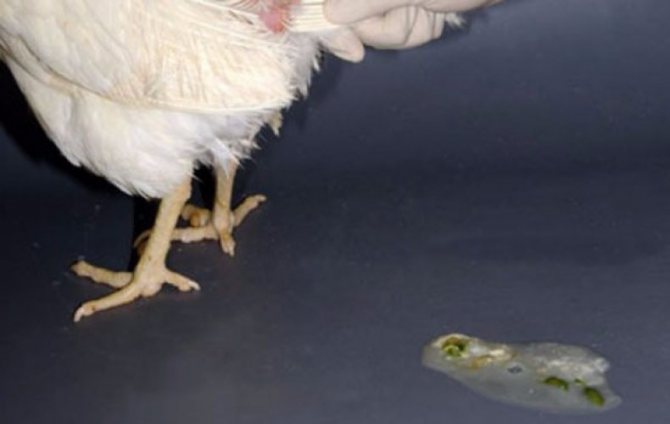

What is nutritional related
The nutrition of adult chickens, especially small chickens, plays a critical role in their health. Very often, unhealthy diet causes diarrhea and other disorders of the digestive tract.
Poor quality feed
Sometimes in small households, waste from the dinner table is used to feed the chickens. This is completely wrong. Along with normal foods, foods that are contraindicated for chickens can get into the feed.Poor quality food can cause not only diarrhea, but also intestinal inflammation, which is much more difficult to treat. It is best to purchase high-quality combined feed from a trusted manufacturer. Read about compound feed for laying hens here.
Overfeeding
Overfeeding, like underfeeding of chickens, affects, first of all, egg production. Some excess feed is acceptable only for chickens that are raised for meat. Such individuals are kept in cages, they are inactive and the excess amount of food does not harm them.


Overfed layers may stop laying eggs altogether.
Unbalanced diet
Chickens should be fed twice a day. The optimal solution would be to purchase ready-made mixed feeds, which contain vitamins and microelements in the right proportions. With good feed, but without the necessary trace elements, chickens can lay eggs without shells. The lack of vitamins leads to a decrease in immunity. Read about food for laying hens at home at this link.
Symptoms and first signs
Signs and symptoms are divided into direct and indirect. The direct ones include the following:
- loose stools on pallets and bedding in the house, as well as the presence of various inclusions in it, such as undigested food pieces, mucus, blood, gas bubbles;
- if the plumage around the cloaca of the bird is stained with feces, it should also be observed;
- sticky and liquid feces in cubs - this can provoke cloacal closure and subsequent death of the chicken;
- the presence of disturbances in the digestive system of the laying hen can be determined by the appearance of the eggs, which in a healthy bird should be clean. If the eggs contain contamination in the form of dark droppings and blood leaks, this is a signal to sound the alarm.
Indirect symptoms include the fact that birds lose their appetite, but at the same time drink a lot of liquid. Weight loss and depressed herd are also signs of health problems.


Pasteurellosis (cholera of birds)
The disease in chickens can be acute or chronic.
For the acute form of pasteurellosis, the following symptoms are characteristic: depression, loss of appetite, shortness of breath, blue earrings and crest, diarrhea with green stringy mucus and blood clots, constant thirst. Death occurs in 30-90% of the livestock 20-70 hours after the first signs of the disease.
Signs of a chronic course of avian cholera: torticollis, runny nose, mucus in the respiratory passages, shortness of breath with wheezing, joint and paw lesions, eye inflammation, swollen crest, earrings, intermaxillary space and soles of the paws, loss of appetite, loss of body weight.
Pasteurellosis
Antibiotics: chlortetracycline, cobactan suspension, chloramphenicol, trisulfone, terramycin, as well as hyperimmune polyvalent serum
To read
For uninfected poultry in contact with the affected population, the following medications are prescribed: aquaprim, chloramphenicol, tetracycline.
Reasons for the appearance
No disease can arise and develop just like that, there is always a reason for the problem. The sooner you identify and diagnose it, the better.
Infections
Diarrhea can be a symptom some infectious diseases, for example pullorosis. This ailment is also called "White bacterial diarrhea"... When symptoms appear in chickens, treatment should be started immediately.
In adult birds, the disease is almost asymptomatic, but chickens at the age of 1-3 weeks can be severely affected. Infection can occur from temperature changes (extreme heat or cold), and can also spread from an infected individual.
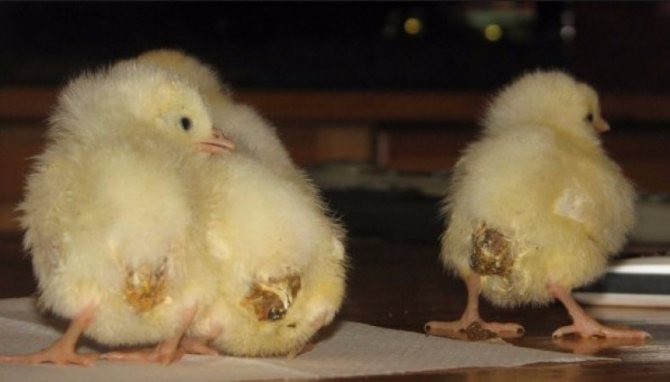

In chickens, a depressed state, drowsiness, and decreased appetite are observed; it seems that it is hard for the birds to breathe, they constantly open their beak and close their eyes.After a few days, liquid dark stools are added to these symptoms, which can block the cloaca of the chicken and thereby cause its death.
Also, diarrhea can be one of the symptoms of the following infections: Gumboro disease, salmonellosis, pasteurellosis, clostridiosis, Newcastle disease. At the slightest sign that the birds have contracted an infection, you should seek the help of your veterinarian. Only a qualified specialist can make an accurate diagnosis and correctly prescribe therapy.
Violation of microflora
Disorders of the intestinal microflora can occur due to the consumption of food with mold or decay. This leads to the development of pathogenic E. coli, clostridia and coccidia. After consulting a veterinarian, intensive therapy is prescribed, aimed at normalizing the microflora.


Wrong diet
Improper feeding of hens can also cause stomach upset. Most often this applies to low-quality food products that the bird eats.
Food poisoning can be caused by: stale food, which, for example, remained in the trough since yesterday, expired food affected by mold or mildew, and food with a high content of proteins, fats and fiber.
How to recognize diarrhea
In laying hens, the chair has its own characteristics:
- If gas bubbles appear, the smell of droppings has changed, then you should think about the causes of the problem.
- When the bird became lethargic, apathetic, its behavior changed - this should be regarded as a symptom of infection.
- If you notice an admixture of mucus, blood, blotches in the droppings, then isolate the chicken, it is highly likely that it is sick.
Normal litter is of two types:
| Intestinal | These are formed granules, brown in color, accompanied by blotches of uric acid, they are white. If the shape of the droppings is uneven, its consistency has changed, an unpleasant odor has appeared, then it's time to think about the presence of malfunctions in the work of the poultry body. |
| Cecal | This litter is also called "night", it has a liquid consistency, as it is formed in the lumen of the rectum. Observed once a day. If the consistency of the droppings has changed, then this should be regarded as an alarming sign. |
How to treat diarrhea in laying hens
In no case should you immediately start drug treatment, all actions must be performed in stages and weighed. Hasty steps can lead to an aggravation of the situation or even death of birds.
What to do first
When diarrhea is evident in a chicken, the cause is first identified and a diagnosis is made. Only then it becomes clear how to treat it.
Naturally, the first step is to remove the irritant - the cause of the disorder. If the fault is incorrect or unbalanced diet, it should be changed. First of all, it is necessary to remove expired and / or low-quality products from the diet and observe the dynamics.
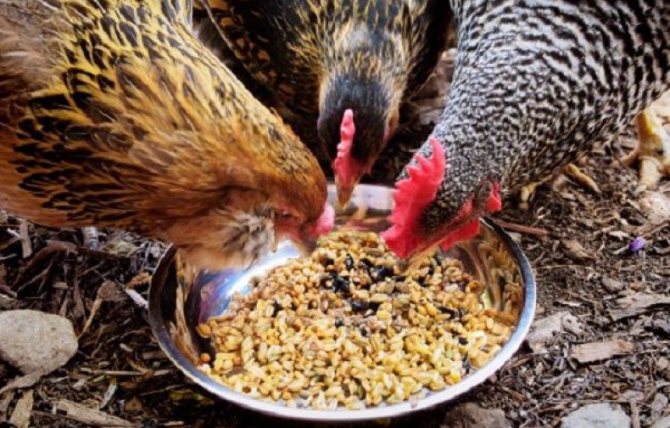

Diarrhea against a background of stress disappears without any special therapy; it is enough to create comfortable conditions for the layers. Even if only one bird is sick, it is necessary to clean and disinfect the chicken coop and isolate all sick individuals. When all these measures are taken, careful observation is required.
If the chickens do not get better, the diarrhea does not go away, and, moreover, new symptoms of the disease appear, one should proceed to drug treatment.
Use of medications
If chickens vilify even after changing their diet, let's figure out the best way to treat them.
A harmless drug for children can come to the rescue "Biseptol"which comes in pill form; they are crushed and added to the feed, while for 1 part of the drug, 8 parts of the feed are taken. To chickens, the dosage is halved. The therapy is carried out within 5-7 days.


Another drug that is safe for sensitive layers is "Levomycetin"; 4–5 tablets are dissolved in water and poured into a drinking bowl.The result will not keep you waiting long - in a couple of days all symptoms will disappear without a trace.
For the treatment of small individuals, they are used probioticsthat help restore healthy intestinal microflora and improve chick health. Fermented milk products such as yogurt and whey, as well as special preparations purchased at a veterinary pharmacy, can act as such a useful remedy.
In severe and advanced cases, antibiotics are used, but such strong medicines can only be prescribed by a veterinarian.
After successful therapy, it is recommended to add vitamins to the diet of layers. These can be vitamin complexes dissolved in water or mixed with food. This rehabilitation is recommended for 7-14 days. After the chickens become cheerful and cheerful again, and they have an appetite, they stop it.
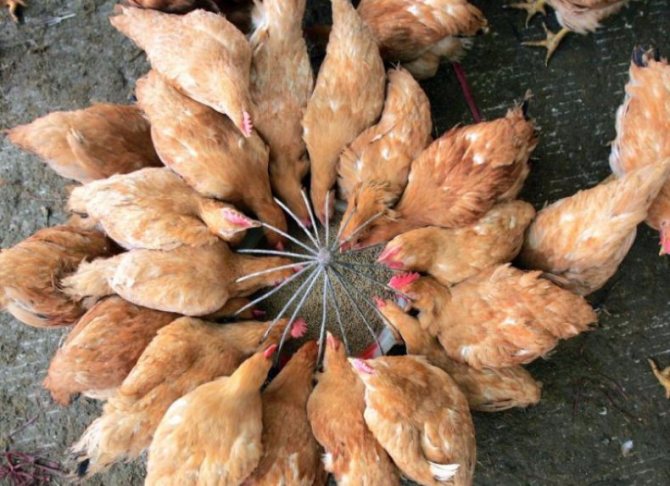

Folk remedies
In addition to the classic methods of treatment, there are many folk, time-tested remedies. Of course, it is better to use them in situations where the disease is not started and its cause is reliably known, that is, with its mild forms. All such methods are based on the use of various infusions and decoctions.
Effective means are considered clay water and broth oats - their astringent components can stop diarrhea. Experienced poultry farmers also report positive results after adding wine to their drink, which also has astringent qualities.
The allowed amount of dry red wine for an adult is 5-10 drops, and for a chicken - no more than 2 drops. The birds are given an alcoholic drink twice a day. You can try to water the birds with chamomile decoction.
A weak solution of potassium permanganate is also able to come to the rescue in this situation; the main thing is that the concentration of the substance is not too high, the finished drink should have a light pinkish tint. This therapy gives results in a couple of days.
Diarrhea is very common in birds, so you need to be ready for this and not give in to panic when it occurs. It is important to remember that a timely identified cause of the disease will help save the chicken coop population from death. Therefore, experts recommend carefully monitoring the diet of birds and taking preventive measures in time.
Diarrhea is common in all animals. But, the fight against it may differ depending on the species. Treatment of diarrhea in chickens requires a special approach, since it directly depends on the very reasons for its occurrence. The owner should first install them and only then begin rehabilitation.
How to determine
Chicken diarrhea is very easy to identify. Just look at the litter. If it is runny, yellow, green, or white, these are the first signs of an upset stomach. It is easier to see the problem in those layers that are kept in cages, or to establish diarrhea in chickens.
The disorder is reflected in the general condition of the birds. It is noticed:
- weakness;
- decreased activity;
- loss of appetite.
Liquid yellow droppings are a symptom of diarrhea
Causes of diarrhea in chickens
Experts identify a number of factors that can cause stomach upset in birds:
Infection among the three causes is considered the most frightening factor. The thing is that if treatment is not timely, it can spread to other birds in the chicken coop. The disease affects the body and, in the absence of a fight against it, can even lead to the death of the livestock.
Poor quality feed is the most common cause. Often, diarrhea in chickens appears due to the fact that the owners give them food that is not suitable for their age. For adults, expired or unbalanced food can be a risk factor.
Therefore, the choice of food should be approached very scrupulously. The stool of laying hens leads to a decrease in egg production, the need for additional cleaning.
Another reason is stress.Not all experts agree with this option, but it has its own rationale. Transporting a bird, changing the room where it lives, "conflicts" with other birds can provoke diarrhea in it.
If a bird walks in an open area, then diarrhea in chickens can be treated based on the possibility of the factor that it has eaten inedible objects.
How do I fix the problem?
If there are signs of a disorder, then an urgent need to treat diarrhea in chickens, since neglect of health will reduce not only the number of eggs, but can also reduce the flock. The first thing to do is to isolate sick chickens from the rest and observe them.
If the bird is very weak and inactive, it is better to contact your veterinarian. He will determine if she has an infectious disease and if she is infectious to the rest of the livestock.
If the problem is not observed the next day, the bird can be returned to the flock. It happens that a problematic bowel movement occurs due to an instant fright of the laying hen and passes just as quickly. But, the owner is better off making sure that everything has passed.
In other cases, you will need to deal with the treatment of the bird. The methods are different: folk and medical. How to treat a bird is already to be chosen by the poultry farmer himself.
Traditional methods of eliminating diarrhea in chickens
How to treat diarrhea in a bird at home? If the litter is green, the amount of grass in the diet is reduced. With cellular content, it is generally excluded from the diet for a while. If the chicken is free, then it is closed in an aviary for several days.
Danger of infection
With hypothermia, transportation or a sharp change in food, disturbances in the process of digesting food in chickens will go away by themselves, as soon as the factor that causes them is eliminated. But infections, diseases, parasites and an improperly selected diet are another matter.
You need to pay attention to each individual case, and not judge by a rather vague general opinion. Learn more about each of the "complex" factors leading to intestinal upset in chickens:
Incorrect feeding (differs in the mass destruction of birds)
Poor food, bird poisoning. Symptoms:
- antonia goiter;
- loss of appetite;
- feces are green-brown in color, frothy and watery.
In such situations, the feed is simply replaced with a better one, and adsorbents (eliminate toxins) and antibacterial agents are introduced into the broilers' diet. It is necessary to drink the chickens with clay water or a solution of copper sulfate.
Excess green forage
Excessive consumption of raw grass poses a threat to the bird's body. With this poisoning, chicken droppings are liquid, with the presence of gas bubbles. Special treatment is not required, you just need to not let the chickens eat so much grass and at first include only dry food in the diet.
Diet imbalance
An unbalanced menu in this case needs to be adjusted:
- with an excess of protein, the droppings are white;
- with an excessive amount of carbohydrates - liquid and with gas bubbles;
- with an increased concentration of fats - light or dark and always sticky.
The second reason is infection
- Gumboro - the color of the droppings changes to yellowish-white, the chickens are dying.
- Newcastle - liquid discharge mixed with mucus and frequent problems with the chicken's respiratory system.
- Colibacillosis (affects young chickens up to 60 days old, the symptoms are pronounced: there are problems with the work of the whole body and general malaise).
- Salmonellosis (droppings become slimy and sometimes completely white, lameness is often observed).
- Pasteurellosis (feces acquire a characteristic green color, viscous mucus is released from the cloacal opening, bloody droppings; problems with the respiratory system may occur).
- Clostridiosis (feces stink and are too dark in color; increased gas production).
The appearance of parasites
- Cocksiosis (bloody, viscous droppings that often include orange streaks).
- Defeat by intestinal helminths.If the reason lies in intestinal helminths, the external signs are similar to other diseases and the true cause is found only in the process of opening the chicken. Treatment is carried out with drugs against helminths, for example, "Dekaris" or "Alben".
How to treat diarrhea in chickens
The best treatment can only be found by a veterinarian, but in most cases, you can handle it at home. To cure diarrhea in chicken, you need to follow a certain algorithm, which includes three main steps.
First stage. During this period, antibiotic treatment is carried out. Dissolve the antibacterial drug in water or mix with feed and give it within 3-5 days. Recommended remedies:
- Levomycetin (can be replaced with "Floran") at a dosage of 2-5 ml per liter of water.
- Furazolidone at the rate of 4-8 g per 10 kg of feed.
The second step is to feed the birds with probiotics. They help restore the normal microflora in the chicken intestines. Recommended drugs include:
- "Monosparin".
- "Lactobacterin".
- "Bifidumbacterin".
- Colibacterin.
If not a single necessary drug is available and there is nothing to do, you can use folk remedies and give the birds yogurt or fermented baked milk with lactobacilli in an amount of 1.5% of the main feed. You can also use drugs intended for people: they are more often available in any pharmacies.
The third stage is the last and is to cure diarrhea in the chicken. During this period, the birds are given aqueous vitamin solutions (from 5 to 7 days) or special vitamin complexes (2 weeks). It is recommended to treat hens with the following means:
- Vitaminol;
- "Chiktonik";
- "Aminovital".
Vitamins at the last stage of treatment should be given to the birds in order to enable the chicken to recover from the fact that it has suffered from the disease. For the treatment of the disease, the third stage is not necessary, and it is not necessary to make vitamin supplements.
Veterinarians do not recommend treating with sugar solutions at home. They provoke the reproduction of pathogenic microflora, which can be the impetus for a new disease.
Chicken diarrhea
- 1 Types of diarrhea in chickens
- 2 Drug treatment for diarrhea
Chicken breeders know that diarrhea in their birds can cause a lot of trouble, both for sick chickens and their owner. This problem makes you pretty worried, as the consequences can be unpredictable. The most important thing is to find out the cause of the disease and try to eliminate it as soon as possible.
Many poultry farmers, especially beginners, are concerned about the question of why diarrhea occurs in a chicken. Veterinarians and experienced poultry farmers claim that there are two reasons for diarrhea, either she ate poor-quality feed, or the whole thing is an infection that gave complications to the gastrointestinal tract. Often, this happens when uncontrolled bird walking, especially in the yard at home (while walking around the yard, they often dig in the ground, peck at various garbage).
For the prevention of diarrhea, you need to carefully monitor domestic chickens. The first warning signs may appear in the form of a change in behavior. A healthy bird is active, eats food well, drinks water, has a smooth and shiny plumage. Does not stagger when walking or standing still. If the owner noticed any deviations in the normal behavior of the bird, you should immediately isolate the suspicious individuals from the rest of the livestock, and conduct an examination for the presence of any diseases.
Of course, it is advisable to call a veterinarian who, as soon as possible, will determine the causes of the pathology and give advice on treatment. This will play a huge role if the chicken has contracted any kind of infection.
Types of diarrhea in chickens
In the occurrence of diarrhea in chickens, the human factor plays an important role. The owner can feed them with old food, lots of vitamins and minerals. Improper care and unsanitary conditions.In such cases, treatment is not prescribed, but you just need to reconsider the conditions for keeping and feeding the birds.
When laying hens have green diarrhea, limit the amount of grass in their diet. If the birds do not live in cages, but often walk around the yard, then sick individuals are recommended to be isolated and examined (to prevent infection of the rest, in case of infection). If the reason lies behind the excessive use of herbs, then diarrhea will go away on its own after a few days. Otherwise, you should call your veterinarian and check for infection.
Another common cause of diarrhea is fear. The chicken is a very gentle creature and can be intimidated by many things. This disorder goes away on its own.
Diarrhea also develops during colds, in this case, you need to isolate the bird in a separate cage, and provide it with heating. There she should be for several days until the diarrhea stops. Such measures are the prevention of an outbreak of infection.
If a chicken with diarrhea constantly drinks water and eats little food, then she has gastritis. For its treatment, it is recommended to use boiled egg white mixed with hemp seeds. To alleviate the general condition, you can use charcoal (any activated pharmacy or wood from ash is suitable).
If a laying hen has white droppings during diarrhea, this is a clear signal that she should be isolated urgently. The droppings can contain not only white impurities, but also solid white masses that resemble chalk. White diarrhea often accompanies infectious diseases that are provoked by paratyphoid bacteria. This disease can bring down an entire livestock.
The infection can spread quickly, due to its ability to stay in damp litter for a long time. This can be facilitated by: close housing, poor ventilation, temperature fluctuations.
Paratyphoid develops very quickly, in the region of 10 days. Often chickens suffer from it, which, after recovery, can remain carriers of the pathogen. The big danger is that mature chickens have a latent form of the course of this disease, and only white droppings with diarrhea can become an alarm signal.
You can treat chickens for this infection with yogurt or other dairy waste. Dysfunctional young chickens are raised only for meat purposes. For the complete extermination of the disease, it is necessary to cleanse the uterine livestock, which requires special laboratory blood tests.
If the laying hen has yellow diarrhea, do not rush to use the drugs. Clay is a good remedy for yellow diarrhea. Instead of plain water, the chicken should be drunk with clay water and cooked with rice. Experienced poultry farmers recommend adding a little red wine to the drink (2-3 drops for chickens, 5-10 for adult chickens).
Water with added wine should be given twice a day. In the stomach of a chicken, wine acts as an astringent. Also, yellow diarrhea can be treated with a decoction of pomegranate peels or quince fruits. In case of persistent yellow diarrhea, call your veterinarian.
Medication for diarrhea
Most often, poultry farmers treat diarrhea with Biseptol. The tablet is ground into powder and added to the feed, at a dose of 18 parts per animal. Biseptol is treated for about 5-6 days. Levomycetin has a good treatment. It is enough to dissolve 4-5 tablets in half a liter of water and pour it into the chicken's drinking bowl. This treatment is very effective against diarrhea and the bird stops vilifying after a few days.
Diseases
The list of diseases that domestic chickens can suffer from is quite large. Some are easily cured, and some have severe pathology and can be dangerous to humans. This material will tell you about the diseases of laying hens at home.
Mycoplasmosis
One of the most common diseases affecting the respiratory system of domestic chickens is mycoplasmosis. This disease is widespread throughout the country and can be transmitted to offspring through eggs, as well as by airborne droplets and through food and water. The first symptoms may appear 20-45 days. The mortality rate from mycoplasmosis is 20-30%. For the treatment of sick chickens, the following drugs should be added to the water:
- pharmazin;
- entroflon;
- pneumotil.
The dose depends on the number of chickens on the farm and is indicated on the package. The course of treatment does not exceed 5 days.


To prevent respiratory infections, birds must be kept in good conditions, in compliance with all hygiene requirements.
Newcastle disease
This is a very dangerous viral disease that can destroy both chickens and adults in the shortest possible time. The disease affects all internal organs of the bird.... Carriers of infection are transmitted by air. The virus is volatile and has many strains, some of which are nearly harmless and some of which are deadly to birds.
Treatment of Newcastle disease is impractical, as the sick bird remains a source of infection. Such individuals should be destroyed, and healthy birds should be vaccinated.
Colibacillosis
The disease develops rapidly and in the first day can destroy up to 30% of chickens. The source of infection is E. coli, which is found in bird feces. One of the reasons for the occurrence of this disease in small households may be non-compliance with sanitary and hygienic standards, various stresses that reduce the immunity of chickens and contact with infected individuals.
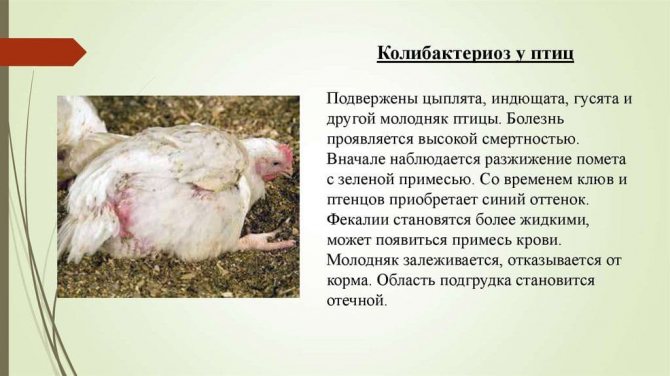

The disease is characterized by the following symptoms:
- temperature increase;
- general lethargy of birds;
- poor appetite;
- diarrhea;
- constant thirst.
For the treatment of colibacillosis, sulfa drugs or antibiotics of the tetracycline group are used... For prophylaxis, furacilin and chloramphenicol can be added to drinking water.
Salmonellosis
This is one of the most dangerous diseases in poultry. Through the eggs and meat of sick birds, carriers of the disease are transmitted to humans, which leads to severe poisoning, which is difficult and long-term to treat. The infection can be transmitted through rodents, mealworms and food. Chickens may experience the following symptoms:
- general weakness;
- wheezing when breathing;
- watery eyes.


Treatment and prevention of chicken livestock is carried out with antibiotics, and to restore the intestinal microflora is used Bifinorm and Bifidumbacterin.
Pasteurellosis
Pasteurellosis or avian cholera can occur in any region. Small private poultry farms are susceptible to this disease. Infection can occur through feed, from sick birds and chicken parasites from the genus of ticks. In the acute form, the following symptoms appear:
- hoarse breathing of birds;
- cyanosis of the scallop;
- green diarrhea;
- intense thirst.


The mortality rate of livestock can reach 90%, and surviving birds are a lifelong source of infection. The disease is not cured, so sick birds are destroyed.
Coccidosis
This disease is caused by unicellular parasites that can enter the body of a bird during open walking or with poor-quality feed. In some cases, it is asymptomatic. Most often, young animals with weakened immunity are affected. The disease is characterized by general weakness and loose feces. For the prevention of coccidosis, use "Salinomycin", "Narazin" and other drugs that destroy unicellular parasites. Read about coccidosis in chickens in this article.
Helminthiasis
Helminths or worms in chickens reduce body weight, egg production and, in some cases, can cause the death of a bird. Most often, infection occurs when walking chickens. There are many types of intestinal parasites.For treatment, antihelminthic drugs "Febendazole" or "Ivermectin" are used, which are active against any parasites. As folk remedies, pumpkin seeds are used, which are added to food, green onions or crushed garlic.
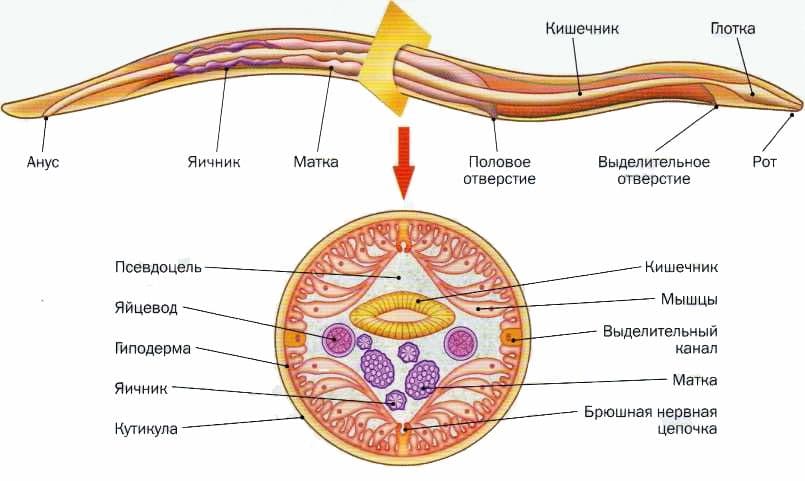

The structure of the worms.
Yellow diarrhea
Under unfavorable conditions of detention or as a result of infection, yellow diarrhea in chickens may appear. If the conditions of detention leave much to be desired, then it is worth urgently fixing it. In case of infection, Gumboro disease is suspected. To clarify the diagnosis, a laboratory study of feces and an autopsy of the dead bird are carried out. Yellow diarrhea in chickens can occur as a result of stress. It can be observed after the move and not only. To remove this reason, various folk methods are used, the unfavorable factor is eliminated.
Coccidiosis
Symptoms of the development of the disease in chickens: drooping wings, dirty, tousled plumage, thirst, loss of appetite, leg cramps, pallor of earrings and crest, greenish diarrhea, turning into brown-brown discharge with bloody streaks, thinning of the egg shell, decreased productivity of layers, depression, drowsiness.
Coccidiosis
Drugs for treatment: tylosin 50, coxcyan 12%, coccidiovitis, solicox, dekox, avatek 15%, rigecostat, hikotsid-17, baikoks. Acidophilus is recommended for gastrointestinal tract maintenance
To read
How to identify a problem by stool color
The color of the chicken droppings can help determine the cause of the diarrhea.
Green
Green or green-white sparse stools with a lot of mucus and blood spots may be the result of an unbalanced diet, poor feed quality, or pasteurellosis.


Pasteurellosis is very dangerous for birds
The infection is carried by mosquitoes, rodents, insects. Liquid feces must be submitted for research. When the diagnosis is confirmed, therapy should be started as soon as possible.
In case of refutation, revise the feed, replace the rough and expired ones with fresh and lighter ones. Pasteurellosis is very dangerous for birds. This infection leads to mass deaths of the livestock.
White
White diarrhea is a signal of a lack of vitamins. Feces are similar in color to chalk in a liquid form, have a solid consistency. The chicken should be isolated from the general population as soon as possible.
White diarrhea can also indicate the presence of pullorosis (salmonella) in chickens. This is an infectious disease that in adult chickens most often affects the ovaries and intestines, and in the chicken all the insides at once.
Infection occurs by taking low-quality feed, through water, feces, and an egg.
Symptoms of infection in adults:
- disorders of the digestive system;
- rapid breathing with an open beak;
- decrease in egg production.
It is unprofitable to save (treat) such individuals. Adults are sent for disposal.
Brown
Rare faeces of a brown tint indicate infection with pathogenic microorganisms - for example, coccids.
Chicken can become infected through the litter of the chicken coop, infected feed or water.


Be sure to read:
Chicken fleas: how to get rid of parasites with folk remedies and chemistry?
In sick layers, the following is observed:
- decreased appetite to complete absence;
- brown, sparse mucus.
Sick individuals sit on the roost for a long time, with their eyes closed. To establish a diagnosis, diagnostics are carried out in the laboratory.
Yellow
Lemon color of feces - evidence of improper care and feeding of chickens.
Yellow rare feces can also indicate the development of Gumboro disease. To confirm or deny this diagnosis, it is necessary to laboratory test the feces or to open the dead bird.
Broilers also develop orange droppings after stress, for example, after moving chickens to new habitats.
Why does diarrhea occur?
Usually, diarrhea in chickens occurs as a result of infectious pathologies or when feeding poor-quality feed. Only a doctor can determine exactly what caused the disease. If you suspect an infection, you should be tested. After receiving the results, the treatment is corrected. In some cases, diarrhea may indicate infection of birds with worms.
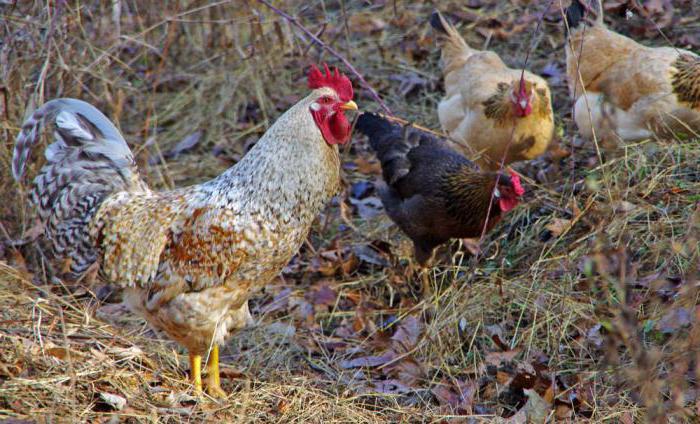

The danger of the disease is that the bird does not digest feed, and as a result, dehydration, intoxication occur, and the body's immune defense decreases. Without treatment, the bird dies. Anyone can make a preliminary diagnosis. To do this, it is enough to see the color of the stool.
Signs
Diarrhea is characterized by frequent and loose stools, in which you can see clots of blood and mucus, remnants of undigested food, a different pattern of impregnation. Other signs may also be observed:
- lethargy and drowsiness;
- stained feathers in the area of the cloaca;
- a large amount of litter in a liquid state in the chicken coop;
- rapid weight loss;
- problems with the work of the digestive tract;
- lack of appetite;
- a strong feeling of thirst;
- impurities of mucus in the droppings.
In laying hens, at the same time, residues of sticky droppings of a dark shade, often with traces of blood, are observed on the surface of the eggshell. A bird suffering from diarrhea becomes shy, inactive, feathers begin to fall out, and the number of eggs laid decreases.
The condition of the litter in the room where it is kept can indicate the presence of an intestinal disorder in the chicken. If it is raw, the bird is most likely suffering from diarrhea. Laying hens experiencing these problems will always have dirty eggs.
Bird diarrhea - how to get rid of diarrhea in a chicken
Diarrhea in chickens can have a variety of causes. If you notice that stool in one or more layers has become liquid, white or yellow, then you should immediately take steps to treat the bird. Why does diarrhea occur in chickens? What should be done and how to treat it? We will talk about this in the article.
Like any other living creature, diarrhea in poultry can occur for several reasons. The most commonplace among them can be stress. Think about whether the chicken fell from the perch, was not worried about the recent move, or did it endure a conflict with the "neighbors" in the chicken coop? Any nervous shock can cause loosening of the stool.
Colds are another common cause of diarrhea. If it is cold and damp outside and the house is not insulated, the bird can get sick. In general, diarrhea in chickens is quite common, and in the absence of more serious causes, the disorder disappears within a few days. In case of bad weather and a cold, you just need to insulate the chicken coop, lay straw on the ground, or direct warm light from a lamp to a sick chicken planted in a separate cage.
Poor quality food can be a more serious cause of the disorder. It is known that a chicken can eat anything, indiscriminately picking up a variety of foods from the ground with its beak. If the birds have yellow or white stools, while they look lethargic, then in this case we can talk about poisoning. Thirst in the absence of appetite may indicate chicken gastritis. Non-serious poisoning can be treated at home as well. But if the diarrhea in chickens continues, then it makes sense to contact the veterinarian for help.
The most difficult cause of diarrhea can be infection, which is often accompanied by other symptoms. The stool may become white, swampy, yellow, and the goiter may become inflamed and the temperature may rise. It is important to recognize the infection as early as possible, otherwise the bird may die.
Fight diarrhea
Although diarrhea in chickens can be called a frequent phenomenon, it is still necessary to take some preventive and therapeutic measures.First, you should observe the sick bird, plant it in a separate clean place and make sure that the other inhabitants of the chicken coop are absolutely healthy. If one of the chickens develops an infection, it can quickly spread through airborne droplets.
Why is it important to fight diarrhea? At least because it dehydrates the body, which is fraught with bad consequences both for the bird itself and for its owner. Lack of treatment, poor quality nutrition can lead to serious illness and even death. Better to spend a few rubles on a quick treatment of the disorder than to lose income from death or infection of chickens later, isn't it ?!
Treatment
Every veterinarian will be able to confirm: it is possible to treat diarrhea in chickens at home, if serious reasons have not preceded it. After isolation of the laying hen or white rooster, the usual diet of the bird should be replaced with a medicinal one. So, you can give a weak solution of potassium permanganate, drink water with sodium chloride to restore the salt balance in the body.
Among the medicines that help both people and chickens, Biseptol and Levomycetin can be distinguished. In the first case, an eighth of a tablet is given to an adult chicken three times a day. The chicken dose is halved. If you have Levomycetin in your first-aid kit, then take five tablets and dissolve them in half a liter of boiled water. Give the medicine to the bird as a drink up to five times a day.
You can also use special animal probiotics, which should be purchased at the zoo pharmacy. These are Emprobio, Brovafom, Vetox, Flosan. It is better to consult a doctor before use.
With medical treatment, diarrhea in chickens goes away after a few days. If there is no improvement, then you need to contact your veterinarian, as the bird may be diagnosed with a serious infectious disease.
Traditional methods
What if you don't have the right drugs? In addition to medicines, folk remedies can also be in the fight against diarrhea. For example, if a chicken has gastritis, then you can give it a decoction of hemp seeds along with a steep yolk. Oatmeal, clay or rice water also helps to hold the stomach together, which can be given as a drink for several days.
Another popular remedy in the fight against diarrhea is a decoction of pomegranate peels or quince juice. If you have dry red wine at home, then you can drip a dozen drops for an adult bird, and only two for a chicken.
If you notice that the chicken's diarrhea is not white or yellow, but green, then the cause of the disorder may be the abundance of greens in the diet. This often happens in the summer due to the large number of plants eaten by birds. What to do? To improve the condition, it is enough to reduce their number in the diet, and then treatment will not be required. In this case, the bird can be given crushed activated carbon dissolved in water.
Why is it better to place the chicken in a separate cage right away? First, it is necessary to calm her down. Secondly, the bird may be sick with an infectious disease. Third, it will be easier for you to treat it this way.
Video "Diet for adult chickens"
The poultry breeder explains how he feeds his birds.
Green feces
The appearance of green diarrhea in chickens may indicate an unhealthy diet or an infection such as pasteurellosis. In the latter case, the feces are submitted to the laboratory for analysis. Infection occurs from sick chicken, mosquitoes and other blood-sucking insects, rodents. If the diagnosis is confirmed by laboratory, then you need to start treatment as soon as possible. If the analysis is negative, then this indicates an unhealthy diet. Often, green diarrhea is caused by spoiled, expired or too coarse feed. In any case, the treatment begins with the use of activated carbon and replacement of the feed with a high quality one.
Symptoms
In addition to changes in the color, odor and consistency of the droppings, diarrhea in laying hens also has accompanying symptoms. Diarrhea with blood is considered a particularly dangerous sign, which may indicate serious internal pathologies, viral or bacterial infection.
You can determine diarrhea in a chicken by the following signs:
- dirt on feathers in the area of the cloaca;
- the presence of a large amount of poultry droppings in the chicken coop;
- apathy, lethargy and depressed state of birds;
- deterioration of the condition and saturation of the color of the feather cover;
- weight loss and retardation of the development of young animals;
- increased thirst;
- decreased or complete lack of appetite;
- decrease in egg production rates;
- the presence of blood, mucus, or undigested residues in the droppings.
With prolonged diarrhea in layers, you can notice a sticky black coating on the surface of the shell, often there are blood particles on it. In advanced cases, the bird's coordination of movements worsens, it stops moving and clogs into a corner.
When assessing the health of a bird, not only external manifestations are examined, but also the characteristics of the litter directly. Particular attention is paid to color, since it can be different depending on the causes of the pathology.
Green diarrhea


Usually occurs when using large amounts of green food, fresh grass in the daily diet. In addition, green diarrhea appears with regular stress of the bird, severe fright. A litter of a light green hue may indicate a bird's catarrhal disease or poisoning with poisonous plants.
The most alarming symptom is dark green frothy diarrhea, as this is one of the typical signs of pasteurellosis infection in chickens. The infection spreads quickly and can lead to massive deaths of birds.
White diarrhea
Most often occurs when there is a lack of minerals or vitamins in the diet of the bird. White diarrhea, which has the consistency of chalk, is one of the symptoms of viral infection, often occurs with paratyphoid fever. This is a transient and dangerous disease that most often affects young animals up to 14 days old.
In addition, white diarrhea can occur when infected with salmonellosis or intestinal parasites. With these diseases, blood particles are often found in the droppings, and the birds become lethargic and lethargic.
Yellow and brown diarrhea
Yellow or brown droppings are a symptom of viral or microbial infections in chickens. Most often accompanied by loss of appetite, increased thirst. And with respiratory diseases, foamy and very profuse diarrhea is observed.
If it is found, it is advisable to isolate the bird from other individuals in order to avoid contamination of the entire herd. If yellow diarrhea is observed only for a short time, this may be a reaction of the body to a change in feed, stress or a change in housing conditions.
Brown or dark brown diarrhea is considered dangerous. This color is caused by the presence of blood cells in the composition, most often found in young animals up to 60 days of age.
It is a typical sign of dysbiosis, intestinal worms. In addition, in laying hens, brown droppings are observed in diseases of the oviduct or cloaca.
General rules for caring for chickens
The keeping of laying hens is possible in two ways: in a cage or on a walk. It is better to decide right away, it is not worth combining - egg-laying chickens are very sensitive to changes and stress, this immediately affects their condition and productivity.
It is worth making a choice based on your capabilities and the number of birds. Keeping them in cages will require high costs for their manufacture, but large areas will not be needed. Another way, with the possibility of walking, is more attractive for raising chickens, but you need to provide them with a pasture area.
Content in cages
Aviaries are best made from a welded cage.The size can be determined at the rate of 7-8 chickens per square meter.
Content in cages
Advice! Poultry farmers are advised to equip a double bottom with a slight slope in the cage. In this case, the eggs will roll to the right place, and the cage will be clean.
If there are a large number of chickens, the cages can be arranged in tiers. The main rule of such cultivation is regular cleaning and disinfection. In addition, you should take care of good lighting - natural light may not be enough for the life of chickens and roosters. It is important to control air humidity - about 70% and temperature - 18-25 degrees.
Walking content
This method of cultivation assumes the presence of a chicken coop, combined with a free exit area for walking. The area under the pasture should be fenced off with a one and a half meter grid. Place drinkers and feeders, nests for laying eggs around the perimeter.
Walking content

